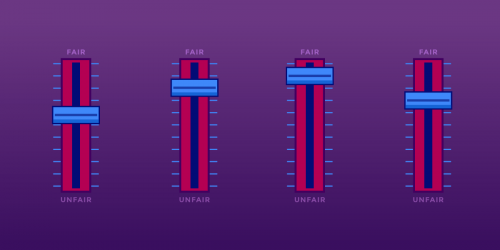Every day, we visit websites or read news articles that contain photos embedded from somewhere else, usually other websites or servers where the images were first published or stored. What’s happening behind the scenes when you click on a website chock full of photos and text is a basic function of the internet—inline linking—that is frequently and improperly attacked as facilitating copyright infringement.
The 9th Circuit Court of Appeals, in a ruling published this week, made clear that linking does not constitute infringement, and kept in place an important test to determine under what circumstances entities can be held liable for displaying copyrighted content online.
Linking is a central feature of the web, but some copyright holders aren’t too fond of it, claiming it facilitates infringement because websites can show images they own and platforms that host content allow those websites to embed the images.
Like it or not, copyright holders have hit a wall, as they did this week, when they’ve taken their infringement claims to the 9th Circuit. The court yesterday upheld dismissal of a copyright infringement lawsuit, Hunley v. Instagram, brought by two photographers against Instagram for permitting BuzzFeed News and Time magazine to embed their Instagram posts in news stories.
Citing its landmark 2007 Perfect 10 v. Google decision, the 9th Circuit held that Instagram could not be liable for secondary infringement because embedding a photo does not "display a copy" of the underlying image. In Perfect 10, the court found that the owner of a web server that actually stores and transmits an image to users can be directly liable for the public display of that image, while the owner of a server that merely directs users to an image hosted elsewhere is, at most, secondarily liable (secondary liability means facilitating infringement by others).
The fact is embedded photos are not copied. In a function repeated seamlessly millions of times a day on the internet, when you visit a website, your computer sends a request to that web address, and the server at that address sends back an HTML text file that includes words that will be displayed and links to other content, like images and videos.
Because an HTML file is text, it cannot contain images. It’s a set of instructions that tell your browser to present content—which can and often does reside on servers elsewhere on the internet. Whatever content the server provides travels directly across the internet to the requestor; it doesn’t pass through the control or awareness of the website provider that included a link to the file.
All that back and forth between browsers and servers is mostly invisible to users—what they see are web pages that are a collection of text, images, and other content, all coming from various places, often without information about what server provided it unless a user clicks on the image.
EFF, along with the Computer & Communications Industry Association, the American Library Association, the Authors Alliance, and the Organization for Transformative Works filed a brief urging the court to uphold this test, known as the “server test.”
As we told the court in our brief, overruling the server test, or limiting its application to search engines, would cause a staggering increase in liability risk for internet users by making common acts of linking subject to copyright’s strict liability regime.
Linking is an essential tool for free expression and innovation. E-commerce sites can employ embedded links enabling consumers to comparison shop. Companies, schools, and libraries can use links to educate and empower users. Newspapers and bloggers use the Twitter posts of President Donald Trump in their stories. An art teacher can embed images of famous works on her web page for students to learn about particular art styles.
These are all normal, everyday activities that allow users to learn and innovate. We’re glad the court saw through this dangerous attempt to undermine the in-line linking system that benefits millions of Internet users every day.











